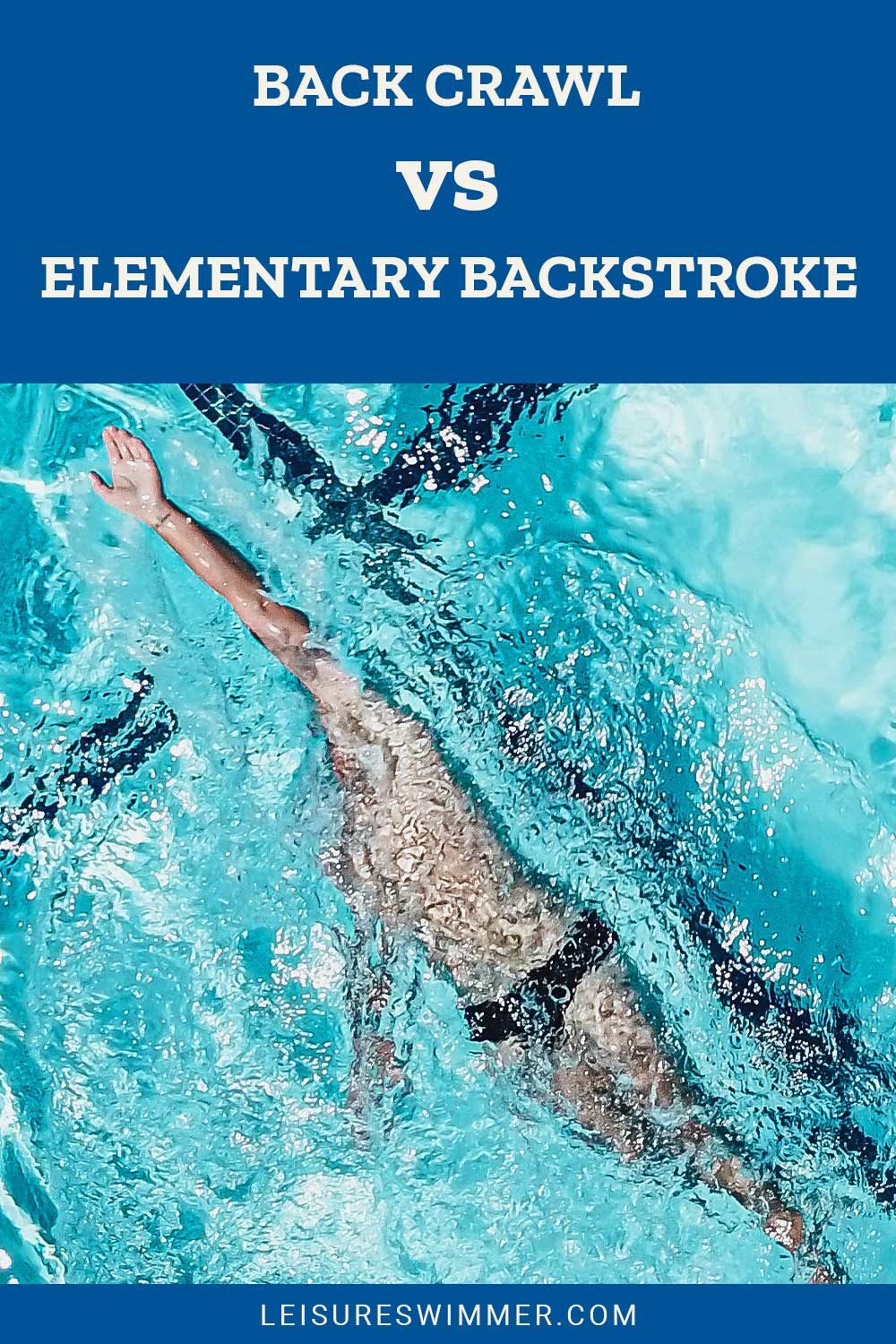Back Crawl vs. Elementary Backstroke
We may earn commissions for purchases made through links on our site. Learn more on our about us page.
The back crawl and elementary backstroke are both swimming techniques designed for beginner swimmers.
They were made with the idea in mind of easing someone into swimming on their back. They are both stepping stones to learning how to do a full backstroke.
However, while they were both created with these ideas in mind, they could not be more different.
The movement itself is even different from one another. Keep reading to find out more about the differences and similarities between the back crawl and the elementary backstroke.

What are the Differences?
The difference between back crawl and elementary backstroke is their symmetry. Back crawl is a backstroke, except moving more slowly.
It puts less strain on the body than the backstroke, otherwise, they are the same. The legs kick as you alternate the arms during the swim.
The elementary backstroke, however, is symmetrical. Both sides of the body are doing the same thing at the same time.
This includes the arms moving together rather than alternating. The legs also move at the same time as the arms rather than just small kicks propelling you forward.
Pros and Cons of Back Crawl vs. Elementary Backstroke
Back crawl and elementary backstroke are vastly different, but each has its benefits and deficits.
Back Crawl Pros:
- It is most similar to a backstroke, which can make the transition easier when moving to a backstroke.
- The back crawl moves slowly and helps the swimmer adjust to being on their back while swimming.
Back Crawl Cons:
- The back crawl can be difficult for beginner swimmers to learn because of the alternating arms as well as the legs being separate from the arms.
Elementary Backstroke Pros:
- This helps a beginner swimmer become adjusted to swimming on their back while not having to worry about the arms and legs.
- The symmetry of the stroke makes learning easy to any level and is very intuitive.
Elementary Backstroke Cons:
- This stroke can make it take longer for the swimmer to pick up an actual backstroke because of how different they are.
Which One Helps You Swim Faster
Between the back crawl and the elementary backstroke, the back crawl helps you swim faster. Both of these strokes are designed for beginners. However, the back crawl, as discussed, is the most similar to the backstroke.
Because of this, when you are trying to learn to swim faster, the back crawl is the way to go. Eventually, your back crawl will develop into a backstroke, which is much faster than its elementary version.
The elementary backstroke, on the other hand, is very slow and not designed to eventually be sped up. Instead, it is designed to have beginners get used to swimming on their backs before eventually moving on to a regular backstroke. Meaning it is a very slow stroke.
Which One is More Physically Demanding?
The back crawl, when compared to the elementary backstroke, is more physically demanding. The back crawl is a slower version of the backstroke, meaning it is much easier than a backstroke itself. However, it still uses all of the same muscles.
The back crawl still uses alternating arms and kick quicks of the legs when swimming. It uses every muscle of the body at once to propel the swimmer as the arms and legs move at different times and speeds.
The elementary backstroke, on the other hand, is designed to ease you into swimming. Meaning that it is meant to be much less physically demanding. Your arms and legs move at the same time in easy movements.
Which One Can Beginners Learn Faster?
Beginners can learn the elementary backstroke much faster than the back crawl. The elementary backstroke is designed with beginners and children in mind. The arms and legs move at the same time, doing movements that mirror each other.
Everything moves at once and does not rely on strength or stamina to keep the swimmer going. The stroke is intuitive enough that anyone can learn to do it. The back crawl, on the other hand, is much more difficult because of the way the arms and legs move separately.
Final Thoughts on Back Crawl Vs. Elementary Backstroke
Both the back crawl and the elementary backstroke were made for beginners to learn how to swim on their backs comfortably. While these swimming techniques have vast differences, they were both designed with the same idea in mind.
If you are trying to decide which one to start with, do whichever you think will be the most beneficial to the swimmer. If they are much younger, elementary backstroke may be the way to go because of its simplicity. Back crawl works best for older swimmers.


